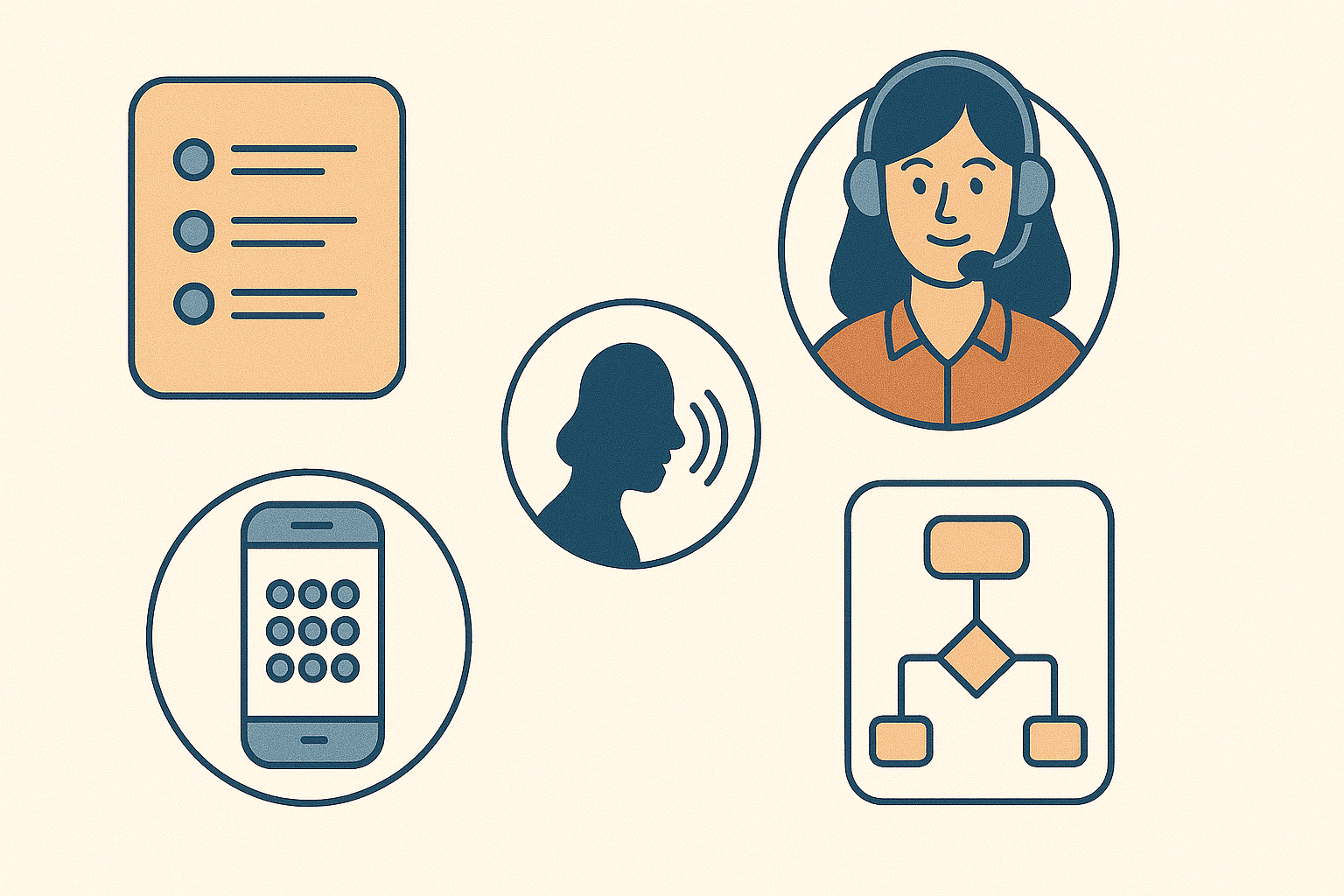In a rapidly forward advancing digital era, customers want quick, efficient and hassle free communication. Whether the customer, request support, or to make a purchase. How your business handles the incoming calls can play a big role in customer satisfaction. That’s where the IVR system comes into action. But what is IVR System and how does it work? And how can it transform your customer service experience?
Understanding IVR: Interactive Voice Response
IVR (Interactive Voice Response) is an automated phone system technology allowing incoming callers to interact with a pre-recorded voice menu. It uses their phone keypad or voice commands. IVR helps route calls to the appropriate department or agent without the need for a live operator. By offering self-service alternatives that enable users to obtain the information they require without the help of customer support, IVR systems enhance the customer experience.
When you call a company and you hear something like, “Press 1 for Sales, Press 2 for Support….” That is an IVR System in work.
Key Features of an IVR System

IVR Systems had some key features which helps in enhanced customer experience. Some of them include –
- Call Routing
IVR systems directs callers to the right department or team based on their inputs. This reduces call transfer delays and improves the overall experience. - Self-Service Options
This helps customers can check their account status, balance, order updates, or even schedule appointments without speaking to an agent. - 24/7 Availability
An IVR system can handle incoming queries even during off-hours, ensuring your business is always responsive. - Multilingual Support
Businesses with different customer bases can provide menus in multiple languages, helping personalize the experience. - Integration with CRM or Ticketing Systems
Modern IVR systems can be integrated with your CRM tools, enabling agents to have complete customer information when they answer the call.
Benefits of Using IVR in Business
IVR systems is beneficial to businesses as it increase efficiency and customer satisfaction while reducing costs and projecting a professional brand image.
- Increased Efficiency: Automates call routing, reducing the workload of receptionists or call center agents.
- Cost-Effective: Eliminates the need to hire additional support staff for basic queries.
- Professional Brand Image: Greets callers with a consistent, polished tone, making your business look more organized and trustworthy.
- Higher Customer Satisfaction: Minimizes wait times and frustration by getting callers to the right person faster.
Common Use Cases for IVR Systems

IVR systems streamline operations for customer support, banking, healthcare, and e-commerce businesses-
- Customer Support Centers: Route calls based on issue type (billing, tech support, etc.)
- Banks & Financial Institutions: Balance inquiry, transaction history, card blocking options.
- Healthcare Providers: Appointment bookings, prescription refills, and lab report inquiries.
- E-commerce Businesses: Order tracking, returns, and refund requests.
IVR Best Practices for Better Customer Experience

To truly enhance the customer journey and learn how does an IVR work, follow these best practices:
- Keep It Short and Simple
Avoid overwhelming callers with too many menu options. Ideally, keep it under 5. - Always Offer a Human Option
Some queries are too complex for automation. Include an option to speak to a live agent. - Use Natural Language
Your prompts should feel conversational and easy to understand—no jargon. - Optimize for Mobile
Most callers use mobile phones. Design the experience with mobile keypads and speech recognition in mind. - Regularly Update Your Flow
As your business evolves, so should your IVR options. Audit and revise it quarterly.
Cloud vs. Traditional IVR Systems: What’s the Difference?
If you’re deciding between old-school systems and modern cloud-based solutions, here’s a quick comparison:
| Feature | Cloud-Based IVR | Traditional IVR Systems |
| Setup Time | Minutes | Days or Weeks |
| Hardware Requirements | None (fully online) | Requires physical setup |
| Cost | Subscription-based, low upfront | High initial investment |
| Scalability | Instantly scalable | Limited by hardware |
| Maintenance | Managed by provider | Requires in-house IT support |
| CRM & Tool Integration | Easy API-based integrations | Often not compatible |
DialOnCloud IVR System: A Smarter Way to Connect
If you’re considering adding IVR to your communication stack, it’s worth exploring what DialOnCloud brings to the table.
DialOnCloud offers a modern, cloud-based IVR system designed for businesses that value speed, simplicity, and customer satisfaction. With its intuitive interface, you can set up call flows in minutes – no tech team needed.
- Drag-and-drop call flow builder
- Custom greetings and multi-level menus
- Call routing based on working hours or caller input
- Seamless integration with CRM tools
How to Use an IVR System (Step-by-Step)

Here’s a simple process to set up your own IVR system:
- Choose an IVR Provider – Select a reliable, scalable IVR system like DialOnCloud.
- Define Call Flow Logic – Decide what options callers will hear (e.g., “Press 1 for Sales”).
- Set Up Menus – Use a drag-and-drop interface to create menus and submenus.
- Record or Upload Greetings – Customize welcome messages and prompts.
- Route Calls – Assign options to departments, agents, or voicemail boxes.
- Test the System – Call your own number to ensure everything works smoothly.
- Monitor & Improve – Use analytics to optimize caller experience based on drop-off points and usage data.
Thousands of support and sales calls are handled daily using DialOnCloud’s IVR system helping businesses like yours scale effortlessly without missing a call.
Want to see how it works ?
Try DialOnCloud’s IVR feature now and experience how smoother communication can actually lead to more conversions and happier customers.
Don’t just manage calls. Turn them into opportunities.
